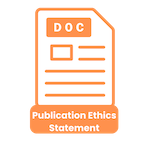Author Guidelines
JOURNAL DESCRIPTION
Physical Activity Journal (PAJU) is a forum for scientific papers that accommodate various multidisciplinary research in sports (physical education, sports science, sports coaching) and related scientific branches such as medical sports, public health, psychology of sports and physiotherapy of sports. We accept manuscripts based on research results, conceptual ideas, and theoretical results based on literature review. Manuscripts must be original and not submitted in other journals. articles that are uploaded must avoid multiple submissions to other journals. Physical Activity Journal (PAJU) is a scientific journal that aims to publish research results in sports and is biannually published (October and April).
JOURNAL CITATION STYLE
STANDARD OF MANUSCRIPT WRITING
The manuscript should be using Arial Narrow with the font face of 11, 1,5 line spacing, 21 x 29.7 cm (A4) paper size, and 3 cm for each setting margin. The original manuscript's length and tables should not exceed 15 pages and use Justify aligned. The manuscript should consist of: a title, abstract (Bahasa Indonesia and English), introduction, method, results, discussion, conclusion, and reference.
MANUSCRIPTS SHOULD CONSIST OF:
TITLE
The title is made carefully, concise and attractive. Use standardized Bahasa Indonesian and should less than 20 words. Avoid using question sentences.
AUTHOR AND CORRESPONDENCE
The author must insert complete identity, including: (1) Complete Name; (2) Affiliation; (3) email address (4); telephone / cellphone number. Omit all titles/degrees (e.g. Dr., Prof. etc.). Add an asterisk (*) to the corresponding author (one author only). Put affiliation and email addresses for each co-author, and full contact details for associated authors.
ABSTRACT
A concise and factual abstract is required (maximum length 250 words). Abstract in italics, spacing 1, size 10, Font Arial one tab indentation and justify alignment. Abstract should contain the problem, objectives, methods, results, discussion and conclusion. Abstract should be written in Bahasa Indonesia and English.
KEYWORDS
The keyword consists of 3-5 keywords, use Indonesian spelling and avoid common and plural terms. Writing scheme in italic.
INTRODUCTION
A good introduction must summarize the relevant arguments and data. In this section also explains the background or reasons which prompt the authors to investigate or discuss the problems, and theoretical framework. The use of reference citations is done by including the author's name and the year of publication, for example (Gallahue, 2006) or (Giriwijoyo, 2007).
METHOD
Methods should contain details relevant to the study's conduct and interpretation, including descriptions of statistical methods detailed. Classification criteria with a brief description concerning the method criteria used. This section should contain the type and design of research, place and time of the study, population and samples, research procedures, data collection instruments, and data analysis techniques. Such a description enables the reader to evaluate the appropriateness of methods and the reliability and the validity of the results.
RESULT
You must explain the important points of your results so that there is a correlation with the discussion. The analysis of the paper must be clear and comprehensive. The results displayed are according to the number of problem formulations. Avoid repeating data in text and tables. Brief comments regarding the significance of the results are appropriate. Use of columns and tables with 10 Arial font sizes. Avoid using a comma behind a number, and please replace it by using dots (for example, p-value <0.05, not p-value <0, 05).
DISCUSSION
This section is the core and most important part of the contents of the journal that will be loaded for publication. The discussion section is intended to interpret the results of the study in accordance with the theories used and not merely explain the author’s founding. The discussion must be enriched by referring to the results of previous studies that have been published in scientific journals. A conceptual framework needs to be made clear to get the appropriate discussion.
CONCLUSION
A conclusion needs to discuss comprehensively. A conclusion is the core point of research findings and discussion. This section needs to synthesis comprehensively, especially in terms of the author's critical evaluation of research findings. It is not merely a re-statement of the data or findings, but a synthesis of key points as mentioned in the “Introduction” which eventually produces the "Results and Discussion" chapter so that there is compatibility. The prospects for developing research findings and the prospects for future research applications (based on findings and discussion) can also be added.
REFERENCE
The reference entry is arranged in alphabetical order. All that is referred to in the text must be listed in the reference list and all that is written in the reference list must be referred to in the text. All references and citations use the APA style. It is suggested to use a reference manager at styling the citations and bibliography, such as Mendeley or Zotero as the example below:
Coker, C.A., 2004. Motor Learning and Controll for Practitioner. New York: Library of Congress Cataloging in Publications.
Lutan, R., Siregar, M.F., dan Djide, T., 2004. Akar Sejarah dan Dimensi Keolahragaan Nasional. Jakarta: Ditjora Depdiknas.
Thomas, J.R., dan Nelson, J.K., 2001. Research Methods in Physical Activity, fourth edition. Champaign: Human Kinetics.

















